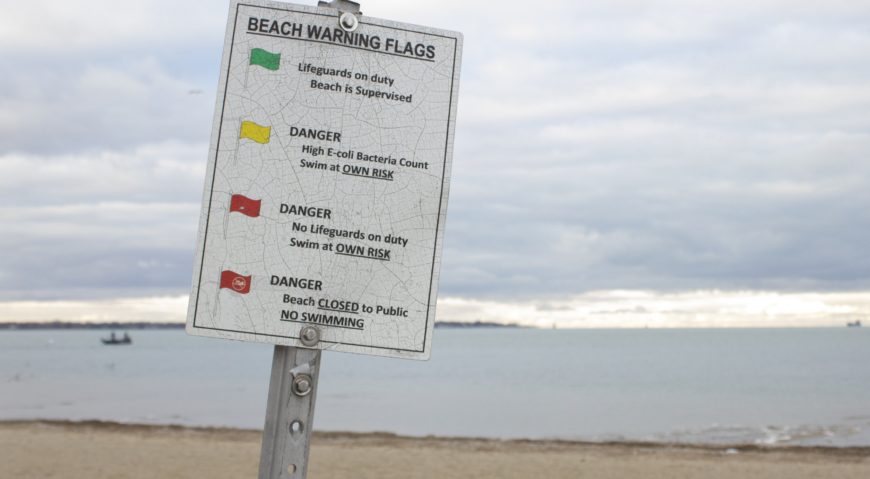Windsor’s Chimczuk Museum

By Aaron Lombardi
The Chimczuk Museum in the Art Gallery of Windsor is now open to the public.
Its exhibits range from rum-running, the Walkerville neighbourhood, Chief Tecumseh and the Ice Age. Located in the city’s downtown core, the museum, which opened in February, was constructed to show the heritage of the city and the surrounding areas. While exhibiting a majority of permanent display cases with artifacts collected by curators, temporary display cases also have their place in the museums’ many rooms. An Indigenous display case has been opened in the museum to bring awareness to local First Nations history.
Madelyn Dellavalle is head curator of the museum and said she believes exhibits are the best way for the public to learn.
“The display piques peoples interests,” said Devalle. “It’s nice to have two museums.”
While the Baby House downtown has displays related to the war of 1812, indigenous artifacts such as arrow heads, clothing and artwork on display in the Chimczuk are from times earlier than 1812.These provide the public with an open knowledge of the First Nations peoples who lived in Windsor before and during the arrival of the Europeans.
“It was a long time coming to have a new museum, and a much more permanent and exhibited space for Indigenous peoples,” said Dellavalle.
First Nations culture faced a loss after residential schools in North America stripped Indigenous peoples of their language and other identifications of their lifestyle.
Renae Hill is the executive director of the Can-Am Friendship Centre in Windsor and believes the museum’s Indigenous displays are a respectful way of promoting education and awareness of First Nations peoples.
“What we as a First Nations community lack is education,” said Hill. “Since we don’t have much idea of our original culture, how can we educate others on it. A museum exhibit helps with that.”
A large wooden statue of Chief Tecumseh in a thinking-man pose sits across from the entrance to the museum. Relics relating to Tecumseh’s life are also on display in the museum such as a flag assumed to be taken from his body after being killed at the Battle of the Thames in 1812.
Other attractions in the museum are the rum-running and military exhibits which display firearms, surplus clothing, bottles and an authentic alcohol prescription form used during prohibition.
The Chimczuk museum is now in its permanent residence and providing locals with an inside look at the history of their community.
These provide the public with an open knowledge of the First Nations peoples who lived in Windsor before and during the arrival of the Europeans.
“It was a long time coming to have a new museum, and a much more permanent and exhibited space for Indigenous peoples,” said Dellavalle.
First Nations culture faced a loss after residential schools in North America stripped Indigenous peoples of their language and other identifications of their lifestyle.
Renae Hill is the Executive Director of the Can-Am Friendship Centre in Windsor and believes the museums Indigenous displays are a respectful way of promoting education and awareness of First Nations peoples.
“What we as a First Nations community lack is education,” said Hill. “Since we don’t have much idea of our original culture, how can we educate others on it? A museum exhibit helps with that.”
A large wooden statue of Chief Tecumseh in a thinking man pose sits across from the entrance to the museum. Relics relating to Tecumseh’s life are also on display in the museum such as a flag assumed to be captured from his body after being killed at the Battle of the Thames in 1812.
Other attractions in the museum are the rum-running and military exhibits which display firearms, surplus clothing, bottles and an authentic alcohol prescription form used during prohibition.
The Chimczuk museum is now taking to its permanent residence and providing locals with an inside look on the history of their community.




